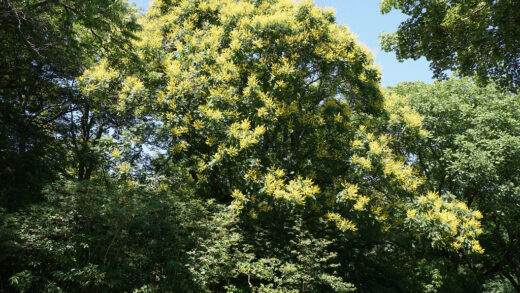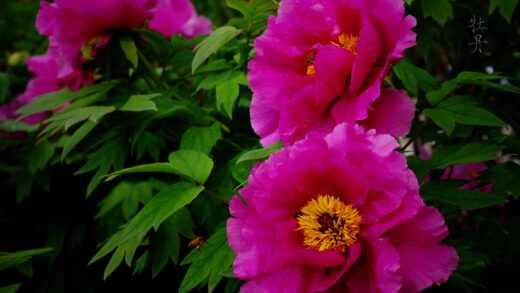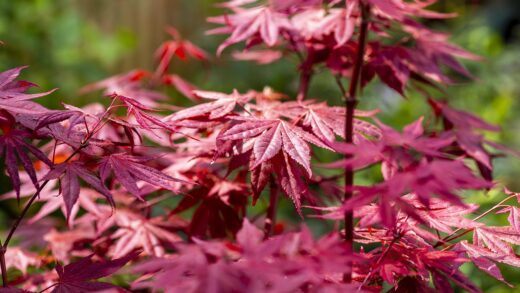Light is the fundamental source of energy for nearly all plants, and the bellflower is no exception. The amount and intensity of sunlight a bellflower receives directly influences its growth, health, and, most importantly, its ability to produce a spectacular floral display. The Campanula genus is remarkably diverse, encompassing species native to a wide range of habitats, from sun-drenched alpine meadows to the dappled shade of woodlands. Consequently, their light requirements are not uniform. Providing the correct light exposure for a specific variety is one of the most critical factors for success, ensuring compact growth, strong stems, and the most prolific and vibrant blooms possible. This chapter will explore the nuanced light needs of various bellflowers and the consequences of providing too much or too little.
The spectrum of light preferences within the bellflower genus ranges from full, direct sun to partial shade. Many of the popular, taller border species, such as the milky bellflower (Campanula lactiflora) and the peach-leaved bellflower (Campanula persicifolia), perform at their best when they receive at least six hours of direct sunlight each day. This ample sunlight fuels the process of photosynthesis, providing the energy needed to produce strong, upright stems that can support their abundant flowers. In regions with cooler summers, these varieties will thrive in an all-day sun exposure. However, in hotter climates, a location that offers some light shade during the most intense afternoon hours can be beneficial, preventing the foliage from scorching and the flowers from wilting or fading prematurely.
Conversely, many of the low-growing and alpine species have adapted to different conditions and often prefer partial shade. Varieties like the Carpathian bellflower (Campanula carpatica) and the Dalmatian bellflower (Campanula portenschlagiana) flourish in locations that receive gentle morning sun followed by afternoon shade. This mimics their native habitats in mountainous regions, where they might be shaded by rocks or other vegetation during the hottest part of the day. Providing these conditions in a garden setting helps to keep the plants cool, conserves soil moisture, and often results in a longer blooming period with richer, more vibrant flower colors.
The signs of incorrect light exposure are usually quite clear and easy to diagnose. A bellflower that is receiving too little light will often become “leggy” or “etiolated.” This means it will produce long, weak, spindly stems as the plant stretches in search of more light. The foliage may be a pale green color, and the plant will produce significantly fewer flowers, if it flowers at all. The overall appearance will be sparse and floppy rather than compact and robust. This is a clear indication that the plant is expending all its energy on vegetative growth to reach the light, with little left over for reproduction, which is the process of flowering.
On the other hand, a bellflower that is exposed to too much intense sun, particularly species that prefer shadier conditions, will also show visible signs of stress. The most common symptom is leaf scorch, where the edges or patches of the leaves turn brown, dry, and crispy. The flowers may appear bleached or faded and will often wilt quickly, with the blooming period being noticeably shortened. The entire plant may appear stunted and stressed, as it struggles to cope with the excessive heat and light intensity. Observing the plants and recognizing these signs is key to determining if a particular location is providing the optimal light conditions.
More articles on this topic
Full sun varieties
Many of the most dramatic and beloved bellflowers are those that thrive in a full sun position, where their floral displays can reach their maximum potential. Full sun is generally defined as a location that receives six or more hours of direct, unfiltered sunlight per day. Species such as the clustered bellflower (Campanula glomerata) and the tall, stately chimney bellflower (Campanula pyramidalis) fall into this category. When planted in a sunny border, these varieties develop strong, sturdy stems and a profusion of blooms that simply cannot be achieved in shadier conditions. The intense light fuels vigorous growth and abundant flower production.
For these sun-loving varieties, adequate moisture becomes a critical companion to the bright light. While they relish the sun, their leaves and flowers will transpire more rapidly, leading to a higher demand for water. The soil for sun-loving bellflowers should be rich in organic matter, which helps to retain moisture while still providing the good drainage they require. A layer of mulch around the base of the plants is also highly beneficial in a full sun location, as it helps to keep the root zone cool and reduces the rate of water evaporation from the soil surface, mitigating the stress of intense heat.
The benefits of a full sun location for these species extend beyond just the quantity of flowers. Sunlight also plays a role in the intensity of the flower color and the overall sturdiness of the plant. Plants grown in sufficient light are typically more compact and less likely to become floppy and require staking, although some of the very tall varieties will benefit from support regardless. The strong light also helps to dry the foliage more quickly after rain or morning dew, which can reduce the incidence of fungal diseases like powdery mildew, a common affliction in more stagnant, shady locations.
It is important to consider the geographical location and climate when interpreting the term “full sun.” The full sun of a cool northern region is far less intense than the full sun of a hot southern climate. In areas with very hot summers, such as the southern United States or Mediterranean regions, many bellflowers that are listed as full sun performers may actually benefit from a location that provides some light shade during the peak afternoon hours, from roughly 1 PM to 4 PM. This respite from the most punishing rays can prevent stress and lead to a healthier plant with a longer bloom time.
More articles on this topic
Partial shade varieties
A significant portion of the bellflower genus is perfectly adapted to, and in many cases prefers, a partially shaded location. Partial shade can be described in several ways: it might be an area that receives direct sun for only a few hours in the morning or late afternoon, or it could be an area of dappled shade throughout the day, such as beneath the canopy of a high, thinly-leafed tree. These conditions are often found at the edge of woodlands, which is the native habitat of many bellflower species, including the charming creeping bellflower (Campanula rapunculoides), though this one can be invasive, and the lovely wood bellflower (Campanula latifolia var. macrantha).
For these species, the benefits of partial shade are numerous. The cooler temperatures and reduced light intensity create a less stressful environment, which can lead to larger leaves and a more prolonged flowering season. The flower colors often appear richer and more saturated in partial shade, as they are not bleached by the intense rays of the midday sun. This is particularly true for the deeper blue and purple varieties. Furthermore, the soil in a partially shaded spot tends to retain moisture for longer, reducing the need for frequent watering and creating the consistently moist conditions that many of these woodland-edge species appreciate.
Many of the most popular bellflowers for rock gardens and ground covers are those that thrive in partial shade. The Dalmatian bellflower (Campanula portenschlagiana) and the Serbian bellflower (Campanula poscharskyana) are excellent examples. These low-growing, spreading varieties will happily colonize areas between paving stones or cascade over a north- or east-facing wall, where they are protected from the harshest sun. Their adaptability to shadier spots makes them invaluable for adding color and texture to those parts of the garden where many other flowering perennials might struggle to perform well.
When choosing a site for shade-preferring bellflowers, it is important to distinguish between partial shade and deep shade. While they appreciate some protection from the sun, they do still require a good amount of bright, indirect light to photosynthesize effectively and produce flowers. A location in deep shade, such as under the dense canopy of a large evergreen tree or on the north side of a tall building, will likely result in very sparse growth and a complete lack of flowers. The ideal partial shade location provides the perfect balance, offering protection from heat stress while still providing enough light energy for the plant to thrive.
Light and plant development
The influence of light on a bellflower’s development goes far beyond simply providing energy; it also guides the plant’s physical form and structure through a process known as phototropism. Plants have a natural tendency to grow towards a light source, and this is clearly visible in bellflowers that are not receiving enough light from all directions. They will stretch and bend towards the dominant light source, leading to lopsided and weak growth. Providing balanced light, or periodically rotating container-grown plants, can help to encourage more even, upright, and sturdy development.
The duration of light, or the photoperiod, also plays a role in the life cycle of many bellflowers, particularly in signaling the transition from vegetative growth to flowering. Many bellflower species are “long-day” plants, which means they are stimulated to produce flowers when the length of the day exceeds a certain critical period. This is a natural adaptation that ensures they flower during the summer months when pollinating insects are most active. This is why attempting to force bellflowers to bloom indoors during the winter months can be challenging without the use of supplemental artificial lighting to mimic the long days of summer.
The quality of the light spectrum also has an effect, although this is more of a concern for those growing plants under artificial lights than in a typical garden setting. Natural sunlight contains a full spectrum of light wavelengths. The blue end of the spectrum is particularly important for promoting compact, bushy vegetative growth, while the red end of the spectrum is more influential in stimulating flowering and stem elongation. An imbalance in the light spectrum can lead to developmental issues. In the garden, the full spectrum of sunlight ensures that the plant receives all the necessary wavelengths for healthy, balanced growth.
Ultimately, the plant’s overall form is a direct reflection of its light environment. A bellflower grown in its ideal light conditions will be a well-proportioned plant with a dense habit, leaves that are appropriately sized and colored, and stems that are strong enough to support its flowers. Any significant deviation from this ideal, such as the pale, stretched stems of a light-deprived plant or the scorched, stunted appearance of a sun-stressed one, is a clear message from the plant that its lighting needs are not being met. Careful observation is the gardener’s best tool for assessing and adjusting the plant’s location to achieve optimal development.




















